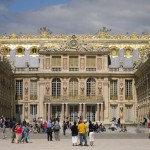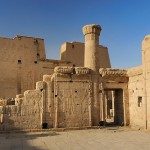Persepolis, Iran
Posted On November 30, 2009
Persepolis also known as Takht-e Jamshid or Chehel Minar was the ceremonial capital of Persian Empire during Achaemenid regime. Persepolis is located at a distance of 70 km towards the northeast direction of the modern city of Shiraz which is located in the Fars Province of modern Iran. In present-day Persian, the site is also known as Takht-e Jamshid and also Throne of Jamshid as well as Parseh. The early remnants of Persepolis belong to nearly 515 BC. To the prehistoric Persians, the city was called Pārsa, it means “The City of Persians”. Persepolis is the Greek word for the word “Persian city”. The citadel of Persepolis is been declared as a World Heritage Site by UNESCO in the year 1979.

Archeological proofs have shown that the olden remnants belong to 515 BC. French archeologists, Andre Godard was the first to excavate Persepolis in the year 1930. He believed that the site was chosen by Cyrus the Great and it was Darius the great who built the great palaces as well as the terrace.
The construction of the Council hall or the three-gated hall as well as the Apadana palace, the grand treasury as well as its surrounding was been ordered by Darius the great. All the construction was completed during the rule of King Xerxes the great. He was the son of Darius the great. Further the construction was continued till the fall of the Achaemenid regime.
Apadana is the second largest building of the Terrace and the last edifices is the Imperial Army’s hall of honour which is also known as the “Hundred-Columns Palace. It is commonly known as the thrown hall. The hall is 70×70 square meter long and its construction was started by Xerxes and came to an end during his son Artaxerxes regime. The construction came to an end in fifth century BC. There are about eight stone doorways on the south and the north side of the throne scenes.

During the start of the Xerxes’s reign the Throne Hall was mostly used for the welcoming of the military commanders and also representatives of the various nations of the empire. Later the Throne Hall was utilized as an imperial museum.
Various ruins of the gigantic buildings are still seen on the terrace. The construction is made in the dark-grey colored marble. There are around 15 undamaged pillars. Since 1970, more three pillars are been erected. Many parts of the buildings are not yet completely constructed. F. Stolze says that the mansion’s rubbish has been left behind.
It is known from the mansion’sculptures that the owner of the seven tombs was the kings of Persia. One of the tombs has the inscription that said it belonged to Darius Hystaspi. It was accepted by all that either the remains were brought to the Persia by the Persian King.
To reach Persepolis take a flight to Shiraz. From there you can hire a cab and reach Persepolis. Guided tours are available to show you the place around. Guides are familiar with English as well as local languages. The best time to visit Persepolis is October to January. You will get a good accommodation in the city that includes 3-star, 4-star as well as a 5-stars hotel.










